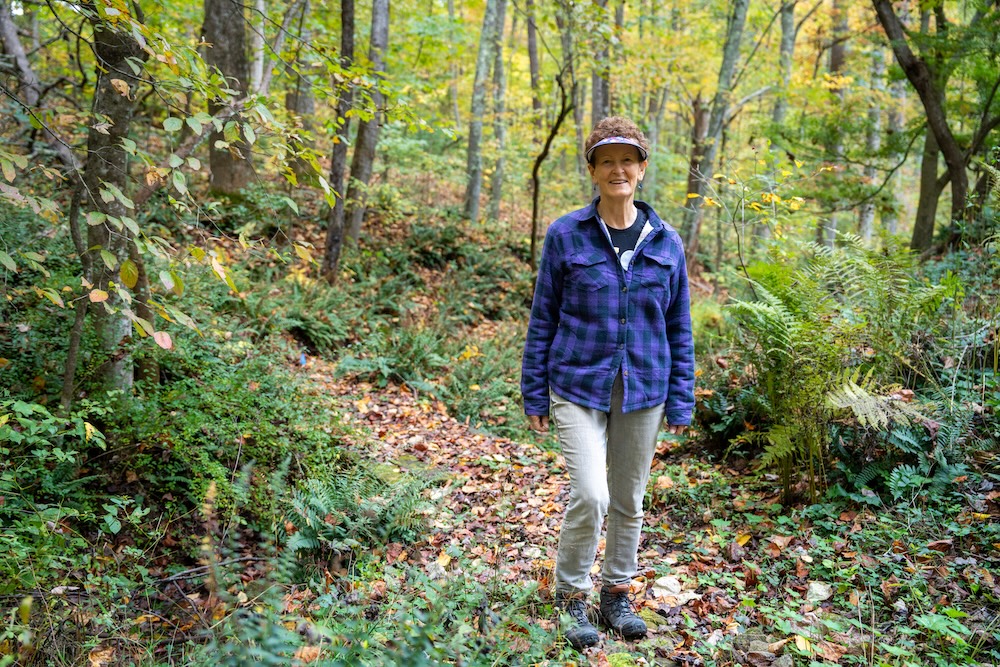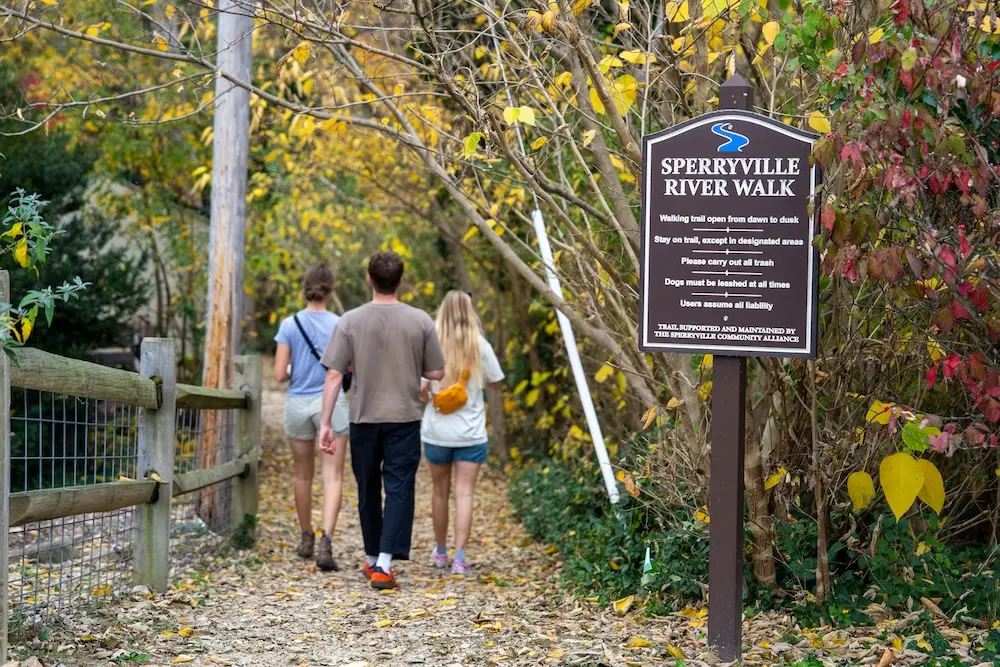Last year, within The Piedmont Environmental Council’s nine-county region, landowners partnered with conservation organizations like ours to conserve 5,446 acres of lands and forever protect the many public benefits they provide the region. “That’s about the annual average for this region, but for PEC, 2024 was well above average and exciting in many ways,” said Director of Conservation Mike Kane.
“PEC is the easement holder on 2,250 of those 5,400-plus acres, with the completion of 10 conservation projects. Both are records in a single year in our 53-year history. In addition, the backbone of that was 1,743 acres of working farmland that’s now protected forever through a federal program to purchase easements that is seldom used in Virginia — the USDA’s Agricultural Land Easement program. We’re also celebrating the conservation of a significant amount of land within the Upper Rappahannock Watershed, an area of emphasis set forth in PEC’s 2023-2028 Strategic Plan,” Kane said.
“The Upper Rappahannock Watershed is an area with an incredible agricultural economy, but also a great mix of natural and historic conservation values. Historically, many of the counties in the watershed generally don’t see as much conservation as, say, Fauquier or Albemarle counties. But we are changing that narrative. We are investing a lot of time working with landowners and partners to accelerate conservation in the watershed, helping them protect the region’s prime farmland and ensure clean water,” he said.
As a result of our Rappahannock-Rapidan Conservation Initiative, PEC helped landowners conserve 970 acres in Madison County last year, more than any other county, and Culpeper had the third highest conservation total, with 745 acres conserved.
PEC’s conservation achievements of 2024 are not a surprise, but rather the direct outcome of PEC staff focusing on our strategic plan goal of seeing 30% of the land in our nine-county region permanently conserved by the end of 2030. And though conservation is generally measured in acres, Kane explains that “the acres are just a shorthand for the more important, life-sustaining resources and benefits the land provides” — resources and benefits that don’t always immediately come to mind in conversations about conservation.
Clean and ample water, for example. Soils rich enough to produce healthy food. Carbon sequestration and filtration of air and water. Protection against flooding impacts and a warming planet. And the economic value to local communities of vibrant agricultural and forestry based industries.
Many conservation organizations and partners are doing great things in Virginia and the Piedmont, but PEC has a unique toolbox that has helped us open the door to an incredible year of conservation that goes much deeper than acreage.
Amping up direct protection of working farmland
The 1,743 acres of working agricultural land PEC was able to conserve last year in partnership with landowners is particularly significant because the development pressures on agricultural lands are greater than ever.
Virginia lost nearly 500,000 acres of farmland from 2017–2022, more than was lost in the previous 15 years combined, according to the 2022 U.S. Census of Agriculture. And 10% of all Virginia farms stopped operations during the same time period. What’s more, fragmentation of remaining farmland has increased land prices to the point of making it difficult to impossible for new and young farmers to enter the field.
“As part of our strategic plan goals, we identified an opportunity to spur conservation by making use of funding available through the USDA’s Agricultural Land Easement, or ALE, program,” Kane said. Created under the 2014 Farm Bill, the ALE program is rarely used in Virginia, but is one of the most significant sources of federal funding available for conservation. It’s a “purchase of development rights” program that pays farmers to relinquish the development rights on their properties. With ALE program funding, PEC can help a landowner use a conservation easement to protect high quality farmland soils, protect water and keep land in production agriculture.
With generous support from the Volgenau Foundation, PEC initiated a focused effort to make use of the ALE program to accelerate conservation in the Upper Rappahannock, where many large working farms are strong candidates for the program. Since 2018, PEC has tapped $3.7 million in ALE funding to match with $1.17 million from the Virginia Land Conservation Foundation to conserve five farms and over 2,100 acres. PEC has an additional $2 million in ALE funding and $1.2 million from VLCF to conserve five more farms totalling almost 1,300 acres over the next 18 months. We believe it is possible to create a pipeline where PEC can help protect four to six farms through the ALE program each year.
PEC’s promotion of the ALE program has sparked renewed interest in conservation from owners/operators of large working farms who are finding that conservation is an option for reinvesting in farm infrastructure, buying more land, and helping to pass farms to the next generation. That is a win-win for farmers, local farm economies, and the Upper Rappahannock’s mosaic of natural, cultural and agricultural resources.
Building long-term relationships and trust that make the difference
Part of what makes an ALE program work in the Virginia Piedmont is the bedrock of PEC’s work as a community-based organization since 1972. Getting to know our neighbors and build long-lasting relationships opens the door for conversations with people about land stewardship, conservation and the future.
“For example, our conservation staff had one-on-one conversations with more than 150 landowners last year about potential conservation options for their land,” Kane said. Staff also attended more than 85 different community events—sometimes as a speaker or host and other times setting up an information table at a partner organization’s event—to talk with folks about PEC, the work we do, and how we can help them plan for the future of their properties.
Partnering with local landowners takes on many forms and doesn’t always lead to a PEC-held conservation easement. That’s not our goal. “We see ourselves as an important part of a network of public and nonprofit organizations dedicated to helping landowners, knowing what tools are available and connecting them to those tools or to other organizations that might be perfectly suited to their particular need,” Kane said. “We have an expansive knowledge of the various roles and resources within the conservation arena, and our goal is to provide the best advice we can. That builds a lot of credibility.”
The strength and breadth of PEC’s 40-plus board members also helps. These are people who live in our community, who are connected to people throughout our region, and who play an important role in connecting PEC staff to their neighbors. They are believers in our mission, directly living it in many cases, and also strong supporters of our work. Their credibility and authenticity gives people a much more meaningful introduction to PEC.
Helping landowners with conservation costs
The third set of implements in PEC’s conservation toolbox are our conservation funds, which are special funds held by the Piedmont Foundation for use by PEC for on-the-ground conservation and restoration projects. Each of PEC’s 11 conservation funds serves a specific geographic region, and most have operating guidelines and a local citizen advisory committee that makes recommendations to the PEC Board of Directors on use of the funds.

Love of the land motivates most landowners’ decision to donate a conservation easement. But the cost of donating an easement is oftentimes a significant obstacle. A landowner’s upfront cost of land survey, appraisal, legal counsel, and other due diligence expenses, combined with a stewardship contribution that conservation organizations use to care for the land in perpetuity, too often prevent landowners from proceeding with conservation. For Carolyn Smith, PEC’s Madison County Land Conservation Fund contributed funding to ensure the long-term stewardship of her property’s conservation values in 2023. In fact, using just over $61,000 from our PEC conservation funds, we assisted six landowners with easements that protected over 1,163 acres over the past two years in Clarke, Culpeper, Greene and Madison counties.
These conservation funds not only provide direct financial assistance for easement costs, they often support projects that enhance restoration and stewardship on public and private lands, and enable us to leverage other available state or federal funding that allow landowners to implement stewardship practices that improve water quality and enhance wildlife habitat. For example, in 2021, the Krebser Fund for Rappahannock County Conservation provided financial support for the creation of the Sperryville Trail Study and Invasive Species Management Plan, which will ensure the future and longevity of this important publicly accessible trail — on private property — that links areas of the village previously lacking safe pedestrian access and much of which runs along the Thornton River.

Finally, the conservation funds can provide financial support in instances where PEC or a conservation partner is directly purchasing land with high conservation value, often threatened by conversion. This was the case in 2024 when two different conservation funds were used to complete PEC’s purchase of the 6-acre Aldie Assemblage, a property in Loudoun County at the intersection of the Bull Run Mountains and Little River. Here, PEC’s James M. Rowley Goose Creek Fund provided the critical seed money needed to initially pursue the purchase, while financial assistance from PEC’s Bull Run Mountain Conservation Fund contributed the final $25,000 needed to reach the $600,000 purchase price.
With our long-term relationships forming the cornerstone of our conservation success, PEC applied our unique experience with programs like ALE and our regional conservation funds to make 2024 our biggest conservation year yet. Through the support of our members and partners, we intend to keep that momentum going in 2025.
This article appeared in the 2025 Spring edition of The Piedmont Environmental Council’s member newsletter, The Piedmont View. If you’d like to become a PEC member or renew your membership, please visit pecva.org/join.
